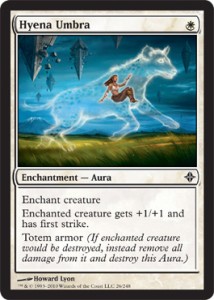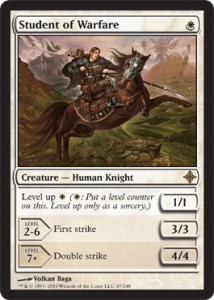Evaluating cards is a very hard skill to grasp, particularly for newer players. It's hard because there are so many things to pay attention to, and it's hard to know how to weight the different aspects.
Here are some pitfalls I see lots of players fall into:
Lotus Cobra Syndrome
When looking at a card, one immediately jumps to the situations where the card would be best. For instance, having Lotus Cobra in play and playing a bunch of fetch lands in order to pump out huge spells. However, one tends to ignore or incorrectly evaluate how often this will occur realistically and how easy it is to get to that position. One also completely ignores what the overall deck would look like where these situations are happening.
Abyssal Persecutor Syndrome
Not correctly weighing the benefits versus the costs of a card. This is quite tricky to fix because you have to ask yourself, "Is this really worth it?" And sometimes you don't know until you try the card. With Abyssal Persecutor, the costs to playing such a card were higher than many were realizing. In addition, the benefit of having a 6/6 flyer was slightly overestimated (but not by much). It just wasn't as universally desirable as some were assuming.
Dies-to-removal
This is a very common put-down for new cards. However you'd be better off ignoring these put-downs completely since they aren't saying anything about the card's playability. A card can't be judged SOLELY based on whether it dies to some form of removal. It's short-sighted and ignores, again, weighing costs versus benefits. An excellent counter-example to this argument is Baneslayer Angel, which basically dies to every removal spell ever. But it's still one of the best creatures ever printed. People are projecting from days when Morphling was the only playable creature (just kidding).
If you're going to use three words to putdown a card, I think "doesn't do enough" might be a better and more accurate option. Although it certainly doesn't add any more information than "dies to removal."
Weighing the Cost vs Benefit
All of these pitfalls that people fall into are a symptom of the same disease. People are falsely evaluating the cost:benefit ratio of the card. Usually they are just overlooking something that needs to come into their calculations.
Let's try to break down the costs and benefits of some of the new Rise of the Eldrazi cards as examples.
The easiest costs to look at are always the mana cost, and the number of cards. This card costs one white and one card. It also costs deck space, which is always an important cost many neglect. It's going to take up space that other cards could be taking. When trying to take that cost into account, it helps to try to find what spells you would be playing instead of this spell if you were to put it in your deck.
This can be tricky, though, since it depends on what kind of deck you're making to begin with. Clearly whatever deck Hyena Umbra goes into will be creature-based. But what kind of creatures would you attach an Umbra to? In my mind, I think something like Knight of the Reliquary seems a decent place to start – it's a creature you want to protect and the first strike makes it more formidable in combat. Although that was not a problem to begin with. It also seems decent on creatures like Great Sable Stag or Kor Firewalker, just to make them more formidable attackers and blockers against decks that already have trouble dealing with them. GSS becomes immune to Bolt while Firewalker can no longer simply be Deathmarked.
It seems much less good in a pure white deck. This is because white already has amazing spells at one mana – Brave the Elements and Path to Exile. And this aura is not good enough to replace either of those. In decks that are GWx, it might be better suited. However something like Vines of Vastwood in green seems to be a better option, as it plays out at Instant speed, protecting creatures at a moment's notice. Whereas the aura opens yourself up to get blown out by an opponent's removal spell. And randomly getting +4/+4 is a lot scarier than the first strike.
The result: Hyena Umbra has a lot of competition at that slot and doesn't beat any of the current options. It is costing you deck space while not giving you the returns you should be expecting.
What about the level up cards? These were largely seen as "bad" by many, but people are coming around. Each Level Up card brings about dissenting opinions, but which opinions are right?
First of all, some people judge Level Up cards based on the very final stage of development. I've heard comments like, "It's an 8-mana 4/4 double-strike. It's terrible." But this is very short-sighted and ignores all the other aspects of the card. You cannot compare a Level Up creature like Student of Warfare to a creature with WWWWWWWW in its mana cost at the top. Those cards are obviously two entirely different monsters.
If you look at the mechanic Level Up, ignoring any specific example, it is inherently a good mechanic. By good, I mean it adds value to the card and makes it better than most "generic" cards. For instance, compare a Bear with a Bear with Level Up. Clearly the Bear with Level Up is going to be better most of the time. And it doesn't matter what it Levels Up to, as long as it gets better at higher levels. It is very much like Kicker in that sense.
This doesn't make all Level Up cards Constructed playable, but it definitely seemed like a mechanic people would like – just because it adds value to any old card. I was apparently wrong.
I feel this is because of our previous encounters with Figure of Destiny. Figure of Destiny was like the Super Hero of Level Up cards. It had FOUR stages of development and could level up at INSTANT speed. On top of that, it was playable in white, red, and white/red decks. It saw play in all three. However, how relevant is it to compare these new Level Up cards with a card that isn't even in the Standard pool anymore? Not very. Sure, it gives us an idea of how the Level Up cards will play out, but one cannot dismiss all the Level Up cards based on the fact they don't level at instant speed like Figure. If, in our minds, we stand all our current Levelers next to copies of themselves but replacing sorcery with instant, then obviously all the sorcery speed Levelers would be unplayable. But these imaginary instant-speed Levelers don't exist, so it doesn't make sense to make that comparison.
Let's look at Student of Warfare. It becomes obvious that if we broke the card apart into three cards, we wouldn't play any of them. A one-mana 1/1? A three-mana 3/3? An 8-mana 4/4? But recall that the “cost” of a card includes the card itself. So splitting Student of Warfare into three cards triples its cost (in essence), making it incredibly bad. What instead we have is “three cards” in a single card. It's easy to think of it like that. Once you realize all Levelers are in essence “multiple” cards in one card, you can see that it is a very advantageous mechanic. It saves space in your deck, which would normally have creatures for each stage in separate cards. But now all you need is 4 copies of the same card in order to curve out. Your one-drop slot and your 3-drop slot are both satisfied with Student of Warfare.
So taking that into consideration, what about these Levelers? Which people generally see as worse than Student of Warfare.
These Levelers are actually quite favorably comparable to Student of Warfare. When comparing Level Up cards, the key features to look at are: the initial cost, the Level Up cost, and the first two stages of the creature. A cheap Level Up cost seems essential to making a Leveler playable – this gives you the option to play spells while also leveling the creature. The cost of tempo is reduced significantly because squeezing in levels here and there while you curve out is easier. Joraga Treespeaker is notable in that it's first Level Up is "free of charge." It's risky to level it into a removal spell, but if you're home free, then your curve isn't even remotely disrupted.
If your opponent leaves up mana to try to wait for you to level it up, you can simply choose not to – and you may have just caused your opponent to slow down his or her development instead.
In a sense, these Level Up costs of 1 and 2 make these Levelers much better than Figure. Because Figure's costs for Leveling multiplied for each Stage. These costs can be split up into whatever is convenient for you that turn. You are given a lot more flexibility in how much mana to leave up, or tap.
I hope seeing Level Up in a new light has improved the mechanic for some of you. For those that already loved Level Up, I'm glad we could share this moment of appreciation for this interesting new mechanic. And we never know, next time we see Level Up, it might just “level up” itself into instant speed!



























